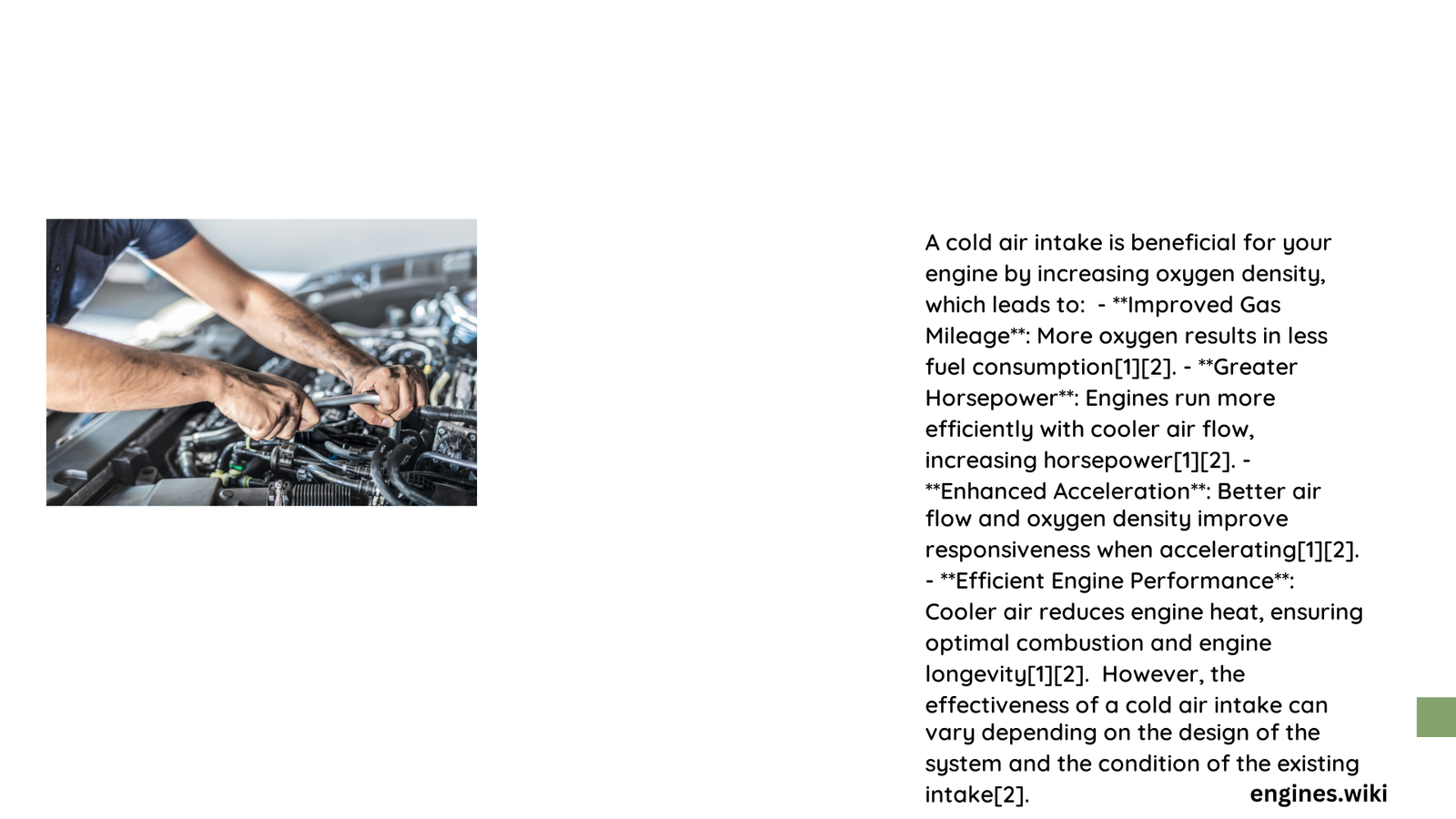Cold air intakes represent a popular aftermarket modification promising enhanced engine performance by delivering cooler, denser air to your vehicle’s combustion system. Automotive enthusiasts and performance seekers often debate their effectiveness, with scientific evidence suggesting potential horsepower increases between 5-20 hp, improved fuel efficiency, and more efficient combustion processes. Understanding the nuanced benefits and potential limitations is crucial for making an informed decision about this engine enhancement strategy.
What Makes Cold Air Intake Attractive to Vehicle Owners?
Cold air intakes offer several compelling advantages that attract automotive enthusiasts and performance-minded drivers. Let’s explore the key motivations behind this modification:
Performance Enhancement Potential
- Horsepower Boost
- Typical horsepower increase: 5-20 hp
- More significant gains in naturally aspirated engines
- Modest improvements in turbocharged systems
Air Temperature and Density Advantages
| Temperature Factor | Impact on Engine Performance |
|---|---|
| Cooler Air Intake | Denser oxygen molecules |
| Improved Combustion | More efficient fuel burn |
| Reduced Engine Stress | Potential longevity benefits |
How Does Cold Air Intake Improve Engine Efficiency?
Cold air intakes work by replacing the standard restrictive air box with a more direct, less complicated intake path. This modification allows:
- Increased Airflow
- Smoother air passage
- Reduced intake restrictions
-
More consistent air volume
-
Temperature Management
- Drawing cooler external air
- Reducing intake air temperature
- Preventing heat soak from engine compartment
What Are the Potential Drawbacks of Cold Air Intake?

While promising performance gains, cold air intakes aren’t without potential challenges:
Installation and Compatibility Concerns
- Requires precise vehicle-specific fitting
- Potential warranty implications
- Professional installation recommended
Cost Considerations
- Average system price: $200-$1,000
- Additional installation costs: $100-$500
- Return on investment varies by vehicle type
Can Cold Air Intake Improve Fuel Economy?
Empirical evidence suggests modest fuel efficiency improvements:
- Potential Fuel Economy Gains
- 1-5% miles per gallon increase
- More noticeable at lower ambient temperatures
- Performance varies by vehicle model
Expert Recommendations for Cold Air Intake Selection
Key Selection Criteria
- Vehicle-specific compatibility
- Reputable manufacturer
- Professional installation
- Realistic performance expectations
Conclusion: Is Cold Air Intake Worth It?
Cold air intakes can be beneficial for certain vehicles, offering modest performance enhancements and potential efficiency improvements. However, individual results depend on multiple factors including vehicle type, driving conditions, and installation quality.
Recommendation Spectrum
- Enthusiast Vehicles: High potential benefit
- Standard Commuter Cars: Moderate, situational benefits
- Performance Vehicles: Potentially significant gains
Pro Tip: Consult a professional automotive technician to assess your specific vehicle’s suitability for a cold air intake modification.
